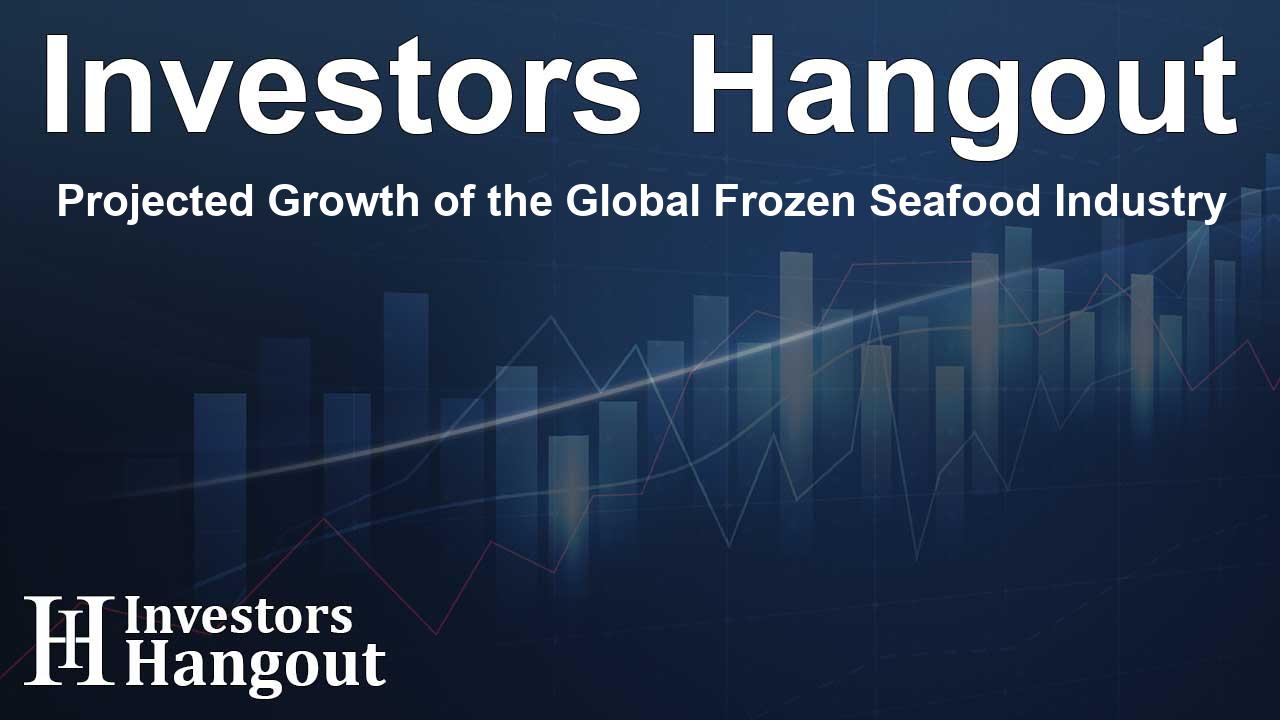Projected Growth of the Global Frozen Seafood Industry

Overview of the Frozen Seafood Market Growth
The frozen seafood market is undergoing significant transformation, with a valuation estimated at US$ 27.3 billion in 2022. This sector is on track to achieve a remarkable growth trajectory, reaching a projected value of US$ 42.9 billion by the early 2030s, driven by a compound annual growth rate (CAGR) of 5.3%. As freezing technologies evolve, the quality and texture of frozen seafood products are anticipated to improve, enhancing the overall consumer experience.
Sustainability and Consumer Awareness
The Shift Towards Eco-Friendly Practices
Consumers today are more conscious than ever about sustainability and sourcing practices in the food industry. This awareness has led to increased demand for seafood products that are sustainably sourced. An eco-friendly certification and transparent traceability can give frozen seafood a competitive edge over alternatives. As a result, companies are continually innovating, introducing products with unique flavors and appealing packaging to spark consumer interest and attract new customers.
Impact of Alternative Proteins on Frozen Seafood
With the rise in popularity of plant-based diets, there is a noticeable shift in dietary preferences that affects frozen seafood sales. To adapt, companies are exploring the development of plant-based seafood alternatives, meeting consumer needs without compromising on sustainability. Adhering to stringent food safety regulations is essential for maintaining consumer trust and ensuring product quality. Compliance with these regulations enhances the credibility of frozen seafood in the market.
Key Findings from Market Analysis
Market Dynamics Driving Growth
The food industry's scrutiny regarding product origins and production methods is leading to greater demands for traceability and transparency. Cold storage's long shelf-life revolutionizes consumer convenience, allowing seafood to remain fresh for extended periods. This access cultivates a year-round variety of options for consumers, contributing to the strengthening of the frozen seafood market. Additionally, the health benefits associated with seafood, such as omega-3 fatty acids, underscore its importance as a nutritious dietary option.
Innovations in Processing and Distribution
Modern freezer technology is instrumental in maintaining the taste, texture, and nutritional value of seafood through rapid freezing techniques. Consequently, the demand for convenient food products is rising. Busy lifestyles are pushing consumers towards ready-to-cook and easy-to-prepare options. Products that come pre-marinated, or pre-cooked, are increasingly popular as they meet consumer demands for convenience.
Exploring the Frozen Seafood Market Landscape
Regional Dynamics and Consumer Trends
The North American frozen seafood market has emerged as a leader, supported by a strong consumer base that enjoys varied seafood options regardless of the season. This preference is further fueled by an increasing focus on health and convenience, with frozen seafood products being readily available at grocery retailers. Companies in this space are continuously innovating to keep up with changing consumer preferences.
Segmentation of the Frozen Seafood Market
Analyzing the market, we categorize frozen seafood into three primary segments: fish, crustaceans, and mollusks. Each type caters to different consumer tastes and preferences, presenting various opportunities for growth. Additionally, by examining end-use sectors such as food processing, foodservice, and retail, it becomes evident where the most significant demand is likely to arise.
Conclusion: Future of the Frozen Seafood Market
The frozen seafood market is poised for sustained growth, driven by rising consumer awareness regarding sustainability, demand for convenience, and increasing health consciousness. Manufacturers must prioritize innovation while adhering to safety standards to capture market share effectively. The evolving consumer landscape represents an exciting opportunity for growth in this dynamic industry.
Frequently Asked Questions
What is the current value of the frozen seafood market?
The frozen seafood market was valued at US$ 27.3 billion in 2022.
What is the projected market size by the early 2030s?
It is projected to reach a value of US$ 42.9 billion by 2031.
What factors are influencing the growth of the frozen seafood market?
Key factors include sustainability concerns, innovation in processing technology, and increased consumer health awareness.
How significant is the impact of alternative proteins on frozen seafood sales?
Changing dietary preferences and the rise of plant-based diets are significant factors that may influence frozen seafood sales.
Why is traceability important in the seafood industry?
Enhanced traceability increases consumer trust and ensures that products meet safety and sustainability standards.
About Investors Hangout
Investors Hangout is a leading online stock forum for financial discussion and learning, offering a wide range of free tools and resources. It draws in traders of all levels, who exchange market knowledge, investigate trading tactics, and keep an eye on industry developments in real time. Featuring financial articles, stock message boards, quotes, charts, company profiles, and live news updates. Through cooperative learning and a wealth of informational resources, it helps users from novices creating their first portfolios to experts honing their techniques. Join Investors Hangout today: https://investorshangout.com/
Disclaimer: The content of this article is solely for general informational purposes only; it does not represent legal, financial, or investment advice. Investors Hangout does not offer financial advice; the author is not a licensed financial advisor. Consult a qualified advisor before making any financial or investment decisions based on this article. The author's interpretation of publicly available data shapes the opinions presented here; as a result, they should not be taken as advice to purchase, sell, or hold any securities mentioned or any other investments. The author does not guarantee the accuracy, completeness, or timeliness of any material, providing it "as is." Information and market conditions may change; past performance is not indicative of future outcomes. If any of the material offered here is inaccurate, please contact us for corrections.